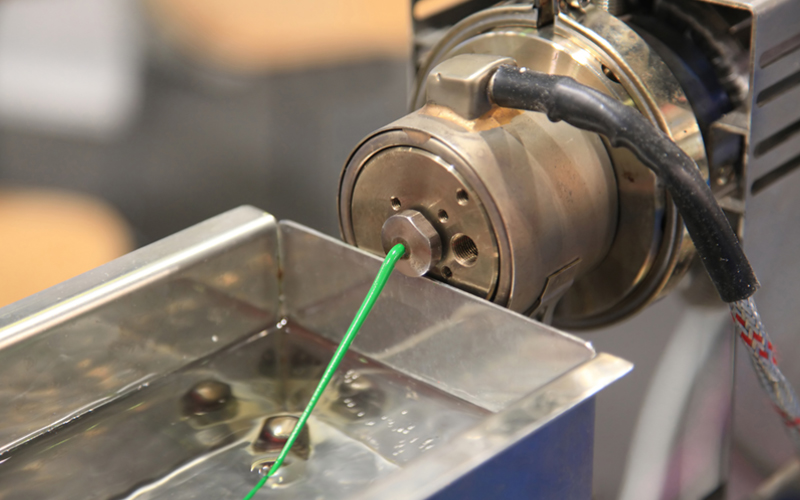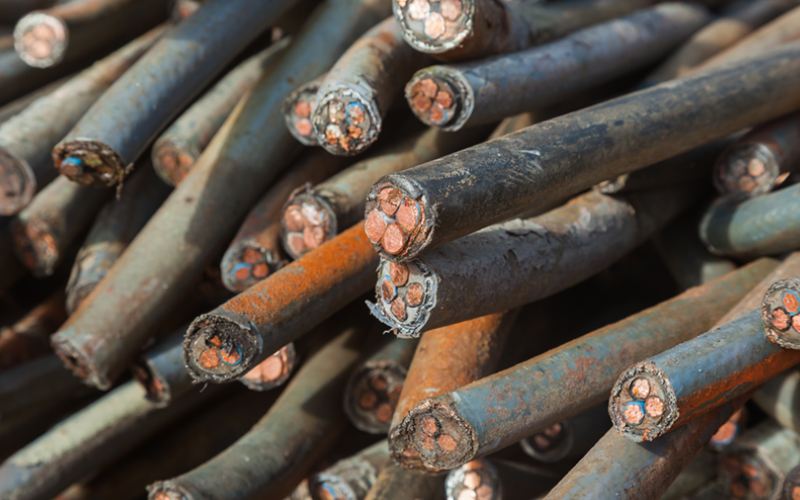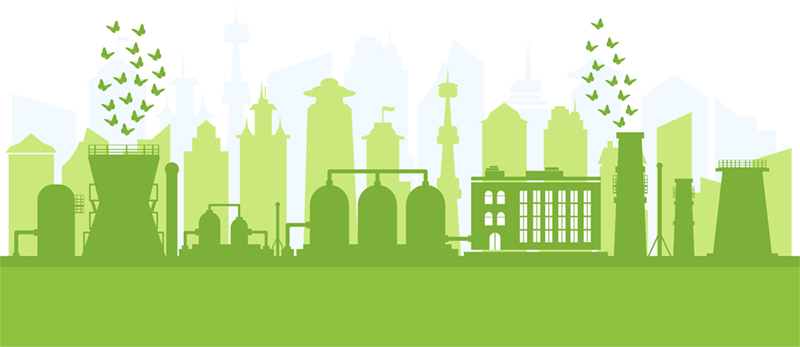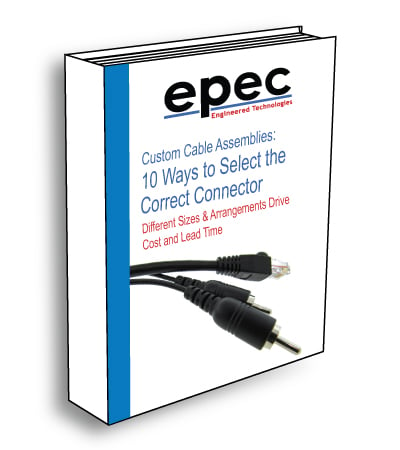Impact of the Toxic Substances Control Act on Custom Cable Assemblies
By Steven J. Goodman, User Interface & Cable Assembly Product Manager
Epec Engineered Technologies
Custom cable assemblies are used everywhere to pass electrical data, power, and other complex signals in nearly all industries. Companies who manufacture electronics must ensure that the printed circuit boards (PCBs) and cable assemblies work as intended and will be safe for extended periods of use across a wide range of environments. If designed improperly, cable assemblies could short-circuit or become damaged causing a serious electrical hazard or even worse.
Manufacturers add chemicals and other specialty compounds during the raw material manufacturing stage early in production. Often pelletized, these additives can be added to the mixture allowing it to be worked, molded, or extruded into the desired end-product. These raw materials and additives may also provide additional benefits such as corrosion resistance, flame resistance, or increased flexibility. For example, plasticizers are added to raw PVC to help improve its flexibility and achieve a specific flammability rating. Because of these plasticizer additives, the raw PVC can be extruded as a cable jacket making it more pliable and enabling the cable to make frequent tight bends without cracking.
However, certain raw materials and additives required for the noted manufacturing processes are considered dangerous to the environment (Figure 1). These chemicals pose significant health risks to plants and animals, are considered dangerous to the environment, and may be classified as carcinogenic to humans. Electronics manufacturing waste can pose a serious risk for soil and groundwater contamination when the products are improperly disposed of. Accordingly, lawmakers created the Toxic Substances Control Act (TSCA) that provides the Environmental Protection Agency (EPA) with the authority to monitor and regulate these chemicals.

Figure 1: Traditional extruded wire jacket resins can contain hazardous chemicals.
Toxic Substances Control Act
The Toxic Substances Control Act (TSCA) permits the Environmental Protection Agency (EPA) to require reporting of certain toxic substances that are used when creating products, including electronics such as PCBs and cable assemblies. The EPA may require record keeping for any importer, manufacturer, processor, or distributor of these chemical substances.
They may also require material testing of the end products to ensure that they are free of hazardous chemicals monitored by the EPA. If the chemicals are found to cause a significant health risk, the EPA has the authority to impose restrictions on these chemicals. The TSCA also requires any importer or exporter to comply with certification reporting when distributing these chemicals.
TSCA Persistent, Bioaccumulative, and Toxic Chemicals Regulations
On Jan. 6, 2021, several amendments were added to the TSCA designed to reduce the exposure of chemicals to the public that are considered persistent, bioaccumulative, and toxic. These chemicals can pose significant risks to exposed populations and susceptible subpopulations due to the chemicals building up in the environment over long periods of time. The final rules for these chemicals enforced by the EPA are as follows:
- Decabromodiphenyl Ether (DecaBDE) – The final rule prohibits the import, manufacturing, processing, and distribution of this chemical and products containing this chemical.
- Phenol, isopropylated phosphate (3:1) – The final rule prohibits the distribution and processing of PIP (3:1) and products containing this chemical. It also prohibits PIP (3:1) to be released in water during processing, manufacturing, and distribution operations.
- 2,4,6-tris(tert-butyl)phenol (2,4,6-TTBP) – The final rule prohibits the distribution of 2,4,6-TTBP and products containing this chemical at concentrations higher than 0.3% within containers that have a volume of fewer than 35 gallons for all uses. The rule also prohibits the distribution and processing of the chemical above the same concentration level of 0.3% by weight when used as lubricant additives or oils
- Pentachlorothiophenol (PCTP) – The final rule prohibits all importing, processing, manufacturing, and distribution of PCTP and PTCP-containing products unless the concentrations are at or lower than 1% by weight.
- Hexachlorobutadiene (HCBD) – The final rule prohibits all processing, importing, manufacturing and distribution of HCBD and HCBD-containing products, while recognizing that the production of chlorinated solvents may unintentionally produce HCBD as a byproduct.
No Action Assurance
Due to the manufacturers and stakeholders voicing their concerns regarding the regulations to prohibit the five chemicals above including PIP (3:1), the EPA provided a No Action Assurance to the Toxic Substances Control Act section 6(h). This rule was to address the manufacturers' concerns regarding the hardships they would experience when trying to manufacture and distribute products, such as custom cable assemblies. The EPA will exercise its enforcement discretion to not levy enforcement actions towards manufacturers who violate the prohibitions when processing and distributing PIP (3:1)- containing products.
This rule applies to cables, coverings, casings, and sleeves that use PIP (3:1) as a flame retardant and plasticizer in producing custom cable assemblies and other electronics. The No Action Assurance will be in effect for 180 days to extend the compliance date from March 8, 2021, while regulatory efforts are investigated. The No Action Assurance only covers the manufacturing and processing actions when using this chemical. It does not cover the prohibitions of PIP (3:1) being released into water or cover the requirements of recordkeeping. The No Action Assurance will remain in effect up to Sept. 4, 2021, or when a final action addresses the compliance date, whichever occurs sooner.
About the Chemicals Used in Custom Cable Assemblies
Many of the chemicals mentioned in the TSCA are used to some degree with the manufacturing of custom cable assemblies.
- DecaBDE is commonly used as a flame retardant in plastic enclosures for electronics. It is also used in wires and cables used in communication.
- PIP (3:1) is used as a plasticizer, flame retardant, and anti-wear product for plastics. It also reduces viscosity when producing rubbers materials.
- 2,4,6-TTBP is a chemical intermediate as it is used during production processes when creating antioxidants used for rubber and plastic.
- PCTP is used to make rubber more pliable during manufacturing processes.
- HCBD is used for rubber vulcanization and is a byproduct of many manufacturing operations.
PIP (3:1) Uses
PIP (3:1) is used often when creating plastics and cable jacketing for electronics and electrical devices (Figure 2). This chemical acts as a plasticizer, which makes rubber and plastic materials softer and more compliant. This chemical action allows for the plastic to be extruded during the manufacturing process to make the outer jacket layer for cables and wires.
In addition, PIP (3:1) is also flame retardant.Should the cable become compromised, and fire is present, the cable jacket will exhibit self-extinguishing properties and help reduce the spread of flames.

Figure 2: Scrap electrical wiring.
With the TSCA prohibiting the use of these chemicals such as PIP (3:1) in the manufacturing and processing of custom cable assemblies, customers can use other less toxic cable jacket materials. Two such materials are biocompatible PVC and MPPE. Biocompatible PVC is often used for cable assemblies for medical devices. It is low cost and readily available. MPPE, which stands for modified polyphenylene, is a thermal plastic that is tougher and lighter than regular plastic. It is also commonly used in medical device manufacturing but can be difficult to source in cable form.
How to Manage TSCA for Custom Cable Assemblies
With the new rules taking place, customers and manufacturers are looking for options when creating custom cable assemblies. Seeking out environmentally-friendly (Figure 3) materials allows for companies to stay in compliance while still providing a quality product that will work as specified for the application.
Unfortunately, environmentally friendly options for electronics manufacturing are still not widespread. Some applications are beginning to adopt technologies like corn-based resins and chlorine-free plastics but cost and availability put pressure on access to these materials. The good news is as the industry adopts initiatives like REACH/RoHS, and the EPA continues to reform chemical additive manufacturing, long-term change for generations to come is occurring right before our eyes.

Figure 3: Environmentally-friendly production.
Summary
As the world shifts toward electric vehicles, renewable energy, and environmentally friendly manufacturing, regulators continue to make progress in cleaning up the raw materials used in electronics manufacturing.
Significant advancements have been made in understanding the impact that compounds such as phenol, isopropylated phosphate (3:1) and other hazardous materials have on the environment and human populations, especially over long periods of time.
Eliminating toxic substances from manufacturing is not entirely possible, but reform can help reduce, contain, and clean up toxic substances to lessen their impact on our world. Alternate materials like PVC or MPPE can be considered as toxic plasticizers and additives are phased out over time. The Toxic Substances Control Act continues to help manufacturers justify the investment in making materials and processes cleaner, but globally more can be done to reduce the demand for toxic substances in electronics manufacturing. And as Theodor Geisel believed, unless someone like you cares a whole awful lot, nothing is going to get better. It's not.
Need a Custom Cable Assembly But Not Sure Where To Start?
Whether it’s military, aerospace, or medical device applications, our team of engineers can help guide you through the development process all the way through to production.
Request a Quote Request Design Support


